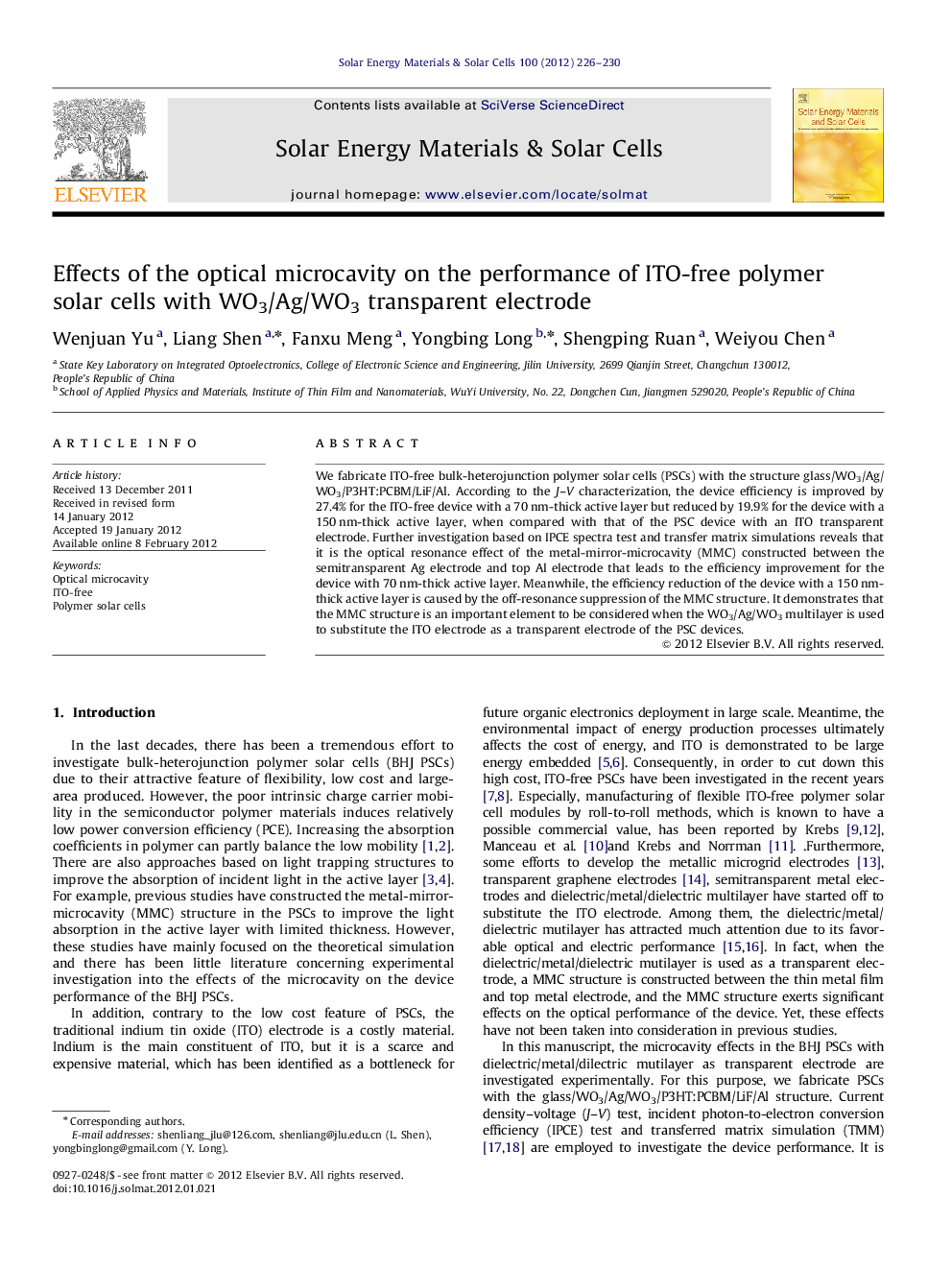| Article ID | Journal | Published Year | Pages | File Type |
|---|---|---|---|---|
| 78397 | Solar Energy Materials and Solar Cells | 2012 | 5 Pages |
We fabricate ITO-free bulk-heterojunction polymer solar cells (PSCs) with the structure glass/WO3/Ag/WO3/P3HT:PCBM/LiF/Al. According to the J–V characterization, the device efficiency is improved by 27.4% for the ITO-free device with a 70 nm-thick active layer but reduced by 19.9% for the device with a 150 nm-thick active layer, when compared with that of the PSC device with an ITO transparent electrode. Further investigation based on IPCE spectra test and transfer matrix simulations reveals that it is the optical resonance effect of the metal-mirror-microcavity (MMC) constructed between the semitransparent Ag electrode and top Al electrode that leads to the efficiency improvement for the device with 70 nm-thick active layer. Meanwhile, the efficiency reduction of the device with a 150 nm-thick active layer is caused by the off-resonance suppression of the MMC structure. It demonstrates that the MMC structure is an important element to be considered when the WO3/Ag/WO3 multilayer is used to substitute the ITO electrode as a transparent electrode of the PSC devices.
► Metal-mirror-microcavity was constructed between the semitransparent Ag electrode and top Al electrode. ► The microcavity effect on device performance varied with the thickness of active layer. ► Distribution of normalized modulus square of the optical electric field reveals microcavity resonance effects.
